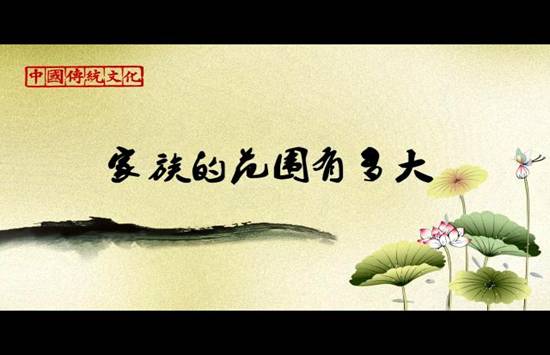 Ancient Chinese society was dominated by a patriarchal clan system, in which the blood relationship was regarded as the most important social connection. Therefore the sense of a clan is deeply rooted in the minds of ancient Chinese people, and was actually a tightly united group. However nowadays this concept has quite faded away. In this lecture we will get to know some ideas about how a Chinese clan is defined and the scope it covers.
Ancient Chinese society was dominated by a patriarchal clan system, in which the blood relationship was regarded as the most important social connection. Therefore the sense of a clan is deeply rooted in the minds of ancient Chinese people, and was actually a tightly united group. However nowadays this concept has quite faded away. In this lecture we will get to know some ideas about how a Chinese clan is defined and the scope it covers.
 The clan refers to the connection of people with blood relationships, which specifically indicates relatives with the same surname. In the patriarchal society, from the standpoint of a male, the closest kinship means his father and son, which constitutes the core of the family called as “three clans”, i.e. father, self, and son.
The clan refers to the connection of people with blood relationships, which specifically indicates relatives with the same surname. In the patriarchal society, from the standpoint of a male, the closest kinship means his father and son, which constitutes the core of the family called as “three clans”, i.e. father, self, and son.
On the foundation of “three clans”, the kin is enlarged by taking one generation earlier to one’s father’s family and one generation later to one’s son’s family, thus the kindred is expanded as grandfather, father, self, son and grandson. According to the Chinese ancient customs and even laws, the lineal kin within the scope mentioned above is not allowed be divided up and must make a big family with five generations under one roof.
Based on the five-generation family, the kindred could be further broadened to “nine clans” by taking two generations earlier to one’s grandfather’s families and two generations later to one’s grandson’s families, thus making the clan. Since five types of mourning costumes are used for mourning, so “nine clans” is also called “five costumes”. In addition to the concept of the clan, there is also one concept named “six relations” including father, mother, elder brother, younger brother, wife and son that are six most intimate relations to a man in his lifetime. Such a small circle builds up a family that is closer than the clan. Then here is our question, what kind of relationship is there between the clan and the family?
Welcome to the micro-lecture - Scope of the Chinese Clan
Course Link:
http://www.5minutes.com.cn/Web/Course/CourseDetail.aspx?id=f05f7d0a-3cc7-44e4-9f25-e8d842c2166c
Micro-Lecture:
http://www.5minutes.com.cn/Default.aspx
By OUC Learning Recourses Centre